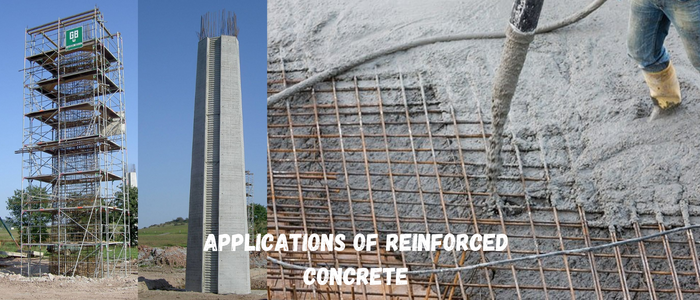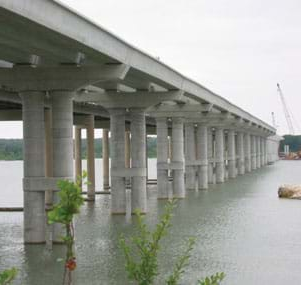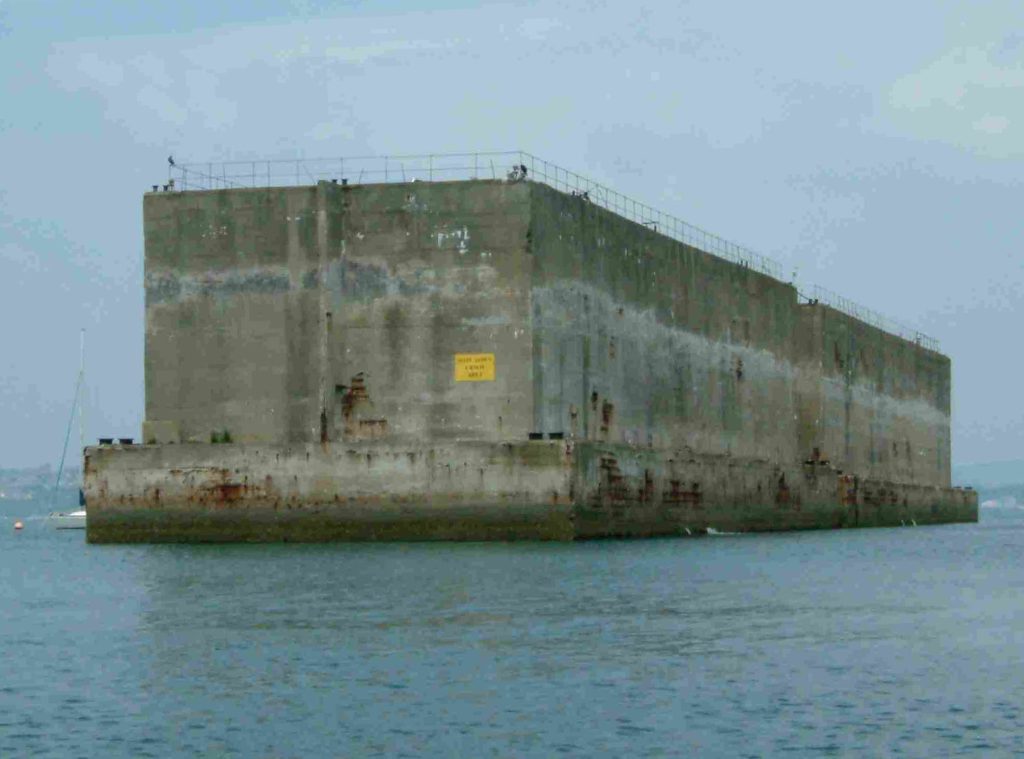Applications of Reinforced Concrete: Concrete is the most commonly used construction material in the world due to the numerous benefits it provides such as the high versatility, adaptability, fire resistance, etc.
Concrete has a strong capacity to carry compression forces (forces that are pressing the material). However, by itself, concrete is not capable to carry tension forces. That is why we implement reinforcing bars inside concrete to resist the tensile stresses.
Thus, Reinforced concrete = plain concrete + reinforcing bars.
There are very wide applications for reinforced concrete in different categories of construction endeavors.
Let us mention in this article some of the applications of reinforced concrete.
Uses Applications of Reinforced Concrete
1. Residential/Commercial/ Institutional Buildings
This is the first category of construction that concrete is widely used in. The definition of a building is “an enclosed structure with a roof and walls standing more or less permanently in one place or a relatively permanent enclosed construction over a plot of land”
Buildings are structures that basically consist of floors (horizontal areas we step on), beams (supporting elements for slabs), columns (supporting elements for beams and/or slabs), roofs and walls.
Buildings can serve multiple purposes either residential (where people live), commercial (such as malls) or institutional (such as schools and universities). Buildings also can combine multiple functions depending on the situation.
Concrete has shown to be an affordable, efficient, fireproof, and durable building material. Another essential quality of concrete is its adaptability, which allows for the creation of architectural aspects that are not possible with other building materials.
Both corporate and residential complexes frequently use multistory reinforced concrete buildings. RCC is perfect for heavy-duty flooring in industries because of its enhanced resilience and resistance to wear and strain.
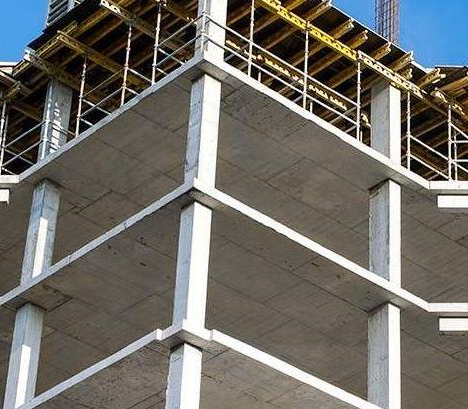
2. Pavements
According to the ACI concrete terminology, a concrete pavement is:
a layer of concrete on such areas as roads, sidewalks, canals, playgrounds, and those used for storage or parking.
Traffic and, in certain circumstances, extreme weather conditions are constantly present on concrete pavement. Concrete pavements redistribute the applied loads over large areas of the subgrade due to its comparatively high stiffness and are able to withstand deformation brought on by passing cars. The key factors that will probably have an impact on how well a concrete pavement system for city streets and local roads performs are traffic, drainage, environment, construction, and maintenance.
When building roads that are intended to handle heavy traffic, reinforced concrete is employed. A few examples of high-class, high-duty roadways made of reinforced concrete include an aeroplane runway and a flying-boat slipway.
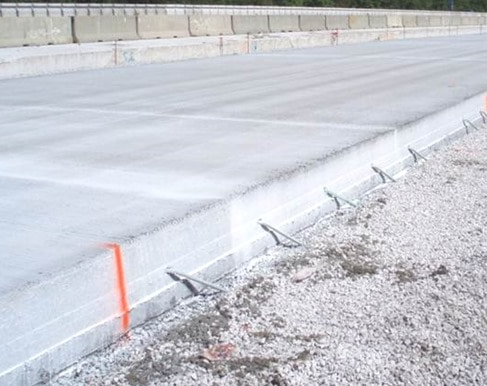
3. RC Bridges
When building major buildings, concrete is unquestionably one of the most essential materials. Also included in this is making bridges. Concrete is a fantastic material for bridges because it offers adaptability and flexibility as well as even weight absorption and distribution for the structure.
In compared to steel bridges, the current tendency is to use reinforced concrete for bridges with short, medium, and large spans. This results in more attractive and cost-effective constructions. Modern concrete has made it possible to attain the required characteristics of concrete, such as strength and durability, for every style of building.
Every structure will have a foundation system that transmits its load safely to the ground. Typically, this foundation system is made of reinforced concrete. The building of practically all forms of foundations, including shallow foundations (such as footings and rafts) and (deep foundations such as piles), uses reinforced concrete. Precast and cast-in-situ reinforced concrete piles have been used as the foundations for a variety of constructions, including bridges and buildings.4. Foundations
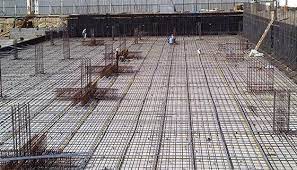
5. Marine Floating Structures
Marine floating concrete structures create a usable facet of land over water.
The use of reinforced concrete has been quite successful in a number of projects, despite the fact that it may not be the best building material for floating structures.
Examples of floating constructions include docks, reinforced concrete caissons, floating marine terminals, and floating bridges.
Reinforced concrete has been employed to create pipes, and these pipes are used for a variety of purposes, including the building of sewage systems. However, it should be noted that unless cylindrical steel sheathe is implanted into reinforced concrete pipes with specialized jointing mechanisms.6. Concrete Pipes
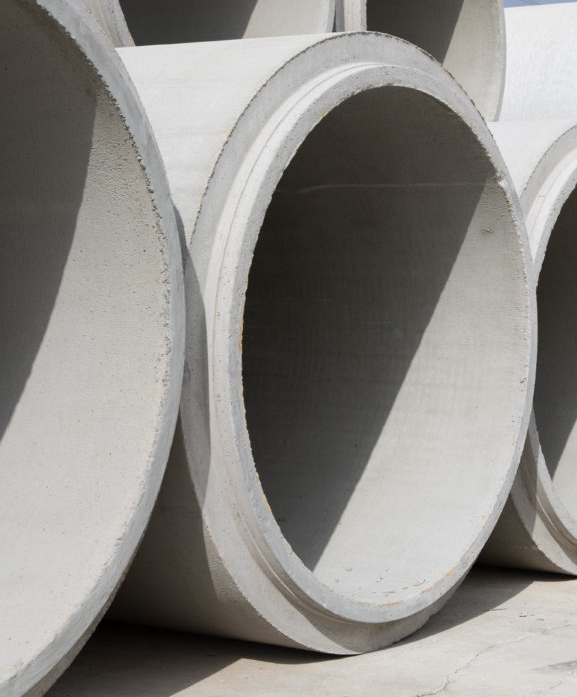
7. Marine Structures
8. Precast Concrete
Concrete that has been precast has simply been produced other than where it will be used. The majority of precast items are wet-cast in factories, although others, like tilt-up panels, are produced on location.
Precast concrete is a branch of reinforced concrete development, and in recent years, its use has grown significantly. Diverse kinds of structures, as well as different structural components, are built using precast concrete. Precast concrete products include columns, beams, slabs, pipelines, light standards, fence posts, gully units, manholes, and more.
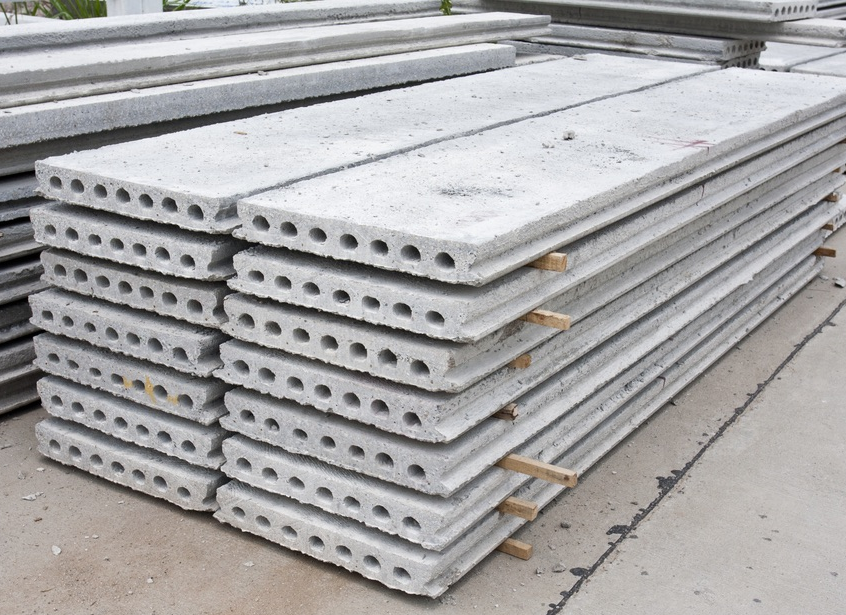
9. Other Applications
Abutments for bridges and retaining walls for earthen embankments are two common examples of reinforced concrete structures used for earth retention. For water retention structures like ground and above tanks and hydraulic structures like gravity and arch dams, reinforced concrete is the best material. The substance is frequently used to build enormous domes for water tanks, sports arenas, and conference centers.
Steel poles for power transmission have almost all been replaced with reinforced concrete poles. Reinforced concrete is almost often used in the construction of tall TV transmission towers.
RCC shells, which are composed of deep edge beams and thin circular slabs, offer an affordable alternative for airplane hangers. When a substantial amount of column-free space is needed under the roof of industrial facilities, reinforced concrete folding plate construction has been employed.
Read Also:
